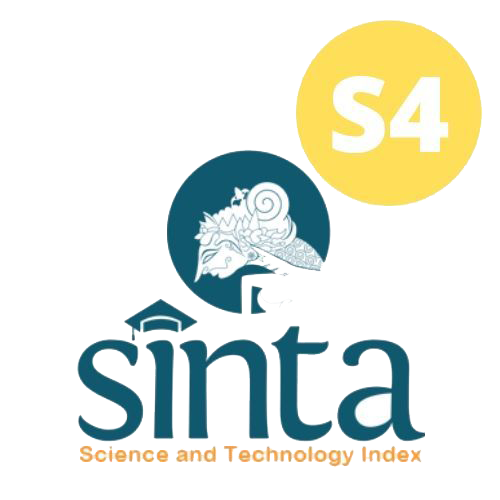- Focus and Scope
- Section Policies
- Peer Review Process
- Publication Frequency
- Open Access Policy
- Archiving
Focus and Scope
Welcome to JP2M [p-ISSN. 2460-7800, e-ISSN. 2580-3263]
JP2M is stands for Jurnal Pendidikan dan Pembelajaran Matematika. JP2M is a high quality open access peer reviewed research journal that is published by Mathematics Education Department of STKIP PGRI Tulungagung. JP2M disseminates new research results in all areas of mathematics, mathematics education and their applications in learning by researchers, academicians, professional, practitioners and students from all over the world. Start from this year (September 2015), this journal will be published two times a year, in March and September.
JP2M (Jurnal Pendidikan dan Pembelajaran Matematika), provides a forum for publishing the original research articles, review articles from invited experts, and the novel technology news related to mathematics education. This journal is designed and devoted to lecturers, researchers, mathematics school teachers, teacher educators, university students (Master and Doctoral) who want to publish their research reports or their literature review articles (only for invited contributors), and short communication about mathematics education and its instructional. Besides regular writers, for each volume, the contents will be contributed by invited contributors who experts in mathematics education either from Indonesia or abroad.
The Journal invites original research articles and not simultaneously submitted to another journal or conference. The whole spectrum of research in mathematics education are welcome, which includes, but is not limited to the following topics:
- Design/Development Research in Mathematics Education
Educational design research is perceived as the systematic study of designing, developing and evaluating educational interventions (programs, teaching-learning strategies, and materials, products, systems) as solutions to such problems. It also aims at advancing our knowledge about the characteristics of these interventions and the processes to design and develop them. Authors could submit their work, either a validation study or a development study in mathematics education, with a comprehensive description and analysis of every stage. The ideas of this research on related topics can be traced to the works of Jan Van den Akker, Koeno Gravemeijer, Susan McKenney, Nienke Nieveen, Tjeerd Plomp, Arthur Bakker, and published books in Taylor & Francis or other publishers.
- Mathematics Thinking and Ability
Mathematics thinking and ability refers to the ability (a human construct) to obtain, to process, and to retain mathematical information (cognitive) and to solve mathematics problems (pragmatic). To maintain the focus of this journal, the scope of mathematics thinking and ability includes the following abilities: thinking, reasoning, connection, communication, representation, and problem-solving. A paper is eligible for this topic if it comprehensively discusses those abilities. The researches (ideas of research) on related topics can be traced to the works of Markku S. Hannula, CERME Proceedings, ICME Proceedings and published books in Springer or other publishers.
- ICT in Mathematics Education
The advance of information and communication technology (ICT) has been the concern of all human life, including in education. When all students use technology, education must be the first one to utilize it for the sake of effectiveness and attractiveness. The researches (ideas of research) on related topics could be traced to the works of Paul Drijvers, Willem J. Pelgrum, Tjeerd Plomp, Jean-Baptiste Lagrange, Michčle Artigue, Colette Laborde, Luc Trouche, and published books in Springer or other publishers.
- Ethnomathematics
Ethnomathematics is the study of the relationship between mathematics and culture. In a deeper understanding, ethnomathematics refers to mathematics which is practiced by members of a cultural group who share similar experiences and practices with the mathematics that can be in a unique form. Culture gives diverse and interesting contexts in mathematics learning to be discussed. Therefore, the scope of ethnomathematics is an important part of the focus and scope of the journal. The ideas of this research on related topics can be traced to the works of Marcia Ascher, Ubiratan d'Ambrosio, Robert Ascher, Marcelo C. Borba, and published books in Springer, Taylor & Francis, or other publishers
Section Policies
Artikel
Peer Review Process
The submitted manuscript is first reviewed by an editor and must be free from plagiarism contents, the maximum limit of similarity is 20%. The submitted manuscript will be evaluated, whether it is suitable for our focus and scope or has a major methodological flaw.
Every submitted paper will be reviewed by at least two peer-reviewers. A single-blind review is applied, where authors' identities are known to reviewers. Based on the comments and advice of the peer-reviewers, the Editor will make a decision to accept, to reject, or to ask authors to revise the manuscript. For Minor Revisions the authors will have one week to resubmit their revised manuscript. For Major Revisions the authors will have two weeks to resubmit their revised manuscript. However, authors should contact the editorial office if extended revision time is anticipated. All reviewer comments should be responded to in a point-by-point fashion. Where the authors disagree with a reviewer, they must provide a clear response. Reviewing process will consider novelty, objectivity, method, scientific impact, conclusion, and references. The suggested decision will be evaluated in an editorial board meeting.
Publication Frequency
This journal is published in twice a year (March and September)
Open Access Policy
This journal provides immediate open access to its content on the principle that making research freely available to the public supports a greater global exchange of knowledge.
This journal is open access journal which means that all content is freely available without charge to users or / institution. Users are allowed to read, download, copy, distribute, print, search, or link to full text articles in this journal without asking prior permission from the publisher or author.
Archiving
This journal utilizes the LOCKSS system to create a distributed archiving system among participating libraries and permits those libraries to create permanent archives of the journal for purposes of preservation and restoration. More...






